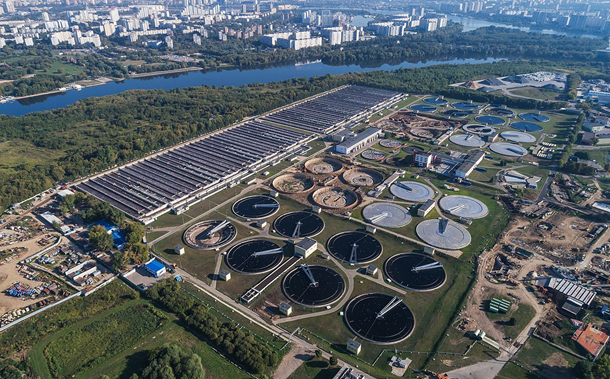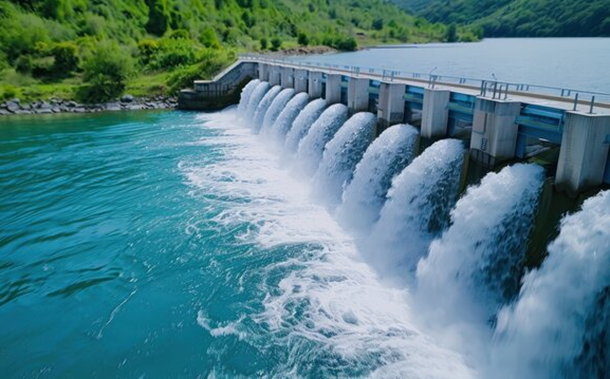Evaluating the Efficiency of Alkaline Activator with Silica-Rich Wastes in Stabilizing Cadmium-Contaminated Soil
Downloads
Doi:10.28991/CEJ-2024-010-07-04
Full Text:PDF
Downloads
[2] Benavides, M. P., Gallego, S. M., & Tomaro, M. L. (2005). Cadmium toxicity in plants. Brazilian Journal of Plant Physiology, 17(1), 21–34. doi:10.1590/s1677-04202005000100003.
[3] Mutter, G. M., Al-Madhhachi, A. T., & Rashed, R. R. (2017). Influence of soil stabilizing materials on lead polluted soils using Jet Erosion Tests. International Journal of Integrated Engineering, 9(1), 28-38.
[4] Hasan, M. B., & Al-Madhhachi, A.-S. T. (2018). The Influence of Crude Oil on Mechanistic Detachment Rate Parameters. Geosciences, 8(9), 332. doi:10.3390/geosciences8090332.
[5] Al-Madhhachi, A. S. T., Mutter, G. M., & Hasan, M. B. (2019). Predicting Mechanistic Detachment Model due to Lead-Contaminated Soil Treated with Iraqi Stabilizers. KSCE Journal of Civil Engineering, 23(7), 2898–2907. doi:10.1007/s12205-019-2312-3.
[6] Khan, M. A., Khan, S., Khan, A., & Alam, M. (2017). Soil contamination with cadmium, consequences and remediation using organic amendments. Science of the Total Environment, 601–602, 1591–1605. doi:10.1016/j.scitotenv.2017.06.030.
[7] Charyulu, S. V., Akhila, C., Vineetha, Ch., & Akanksha, A. (2023). Stabilisation of soil using rice husk ash (RHA) and cement. E3S Web of Conferences, 391, 01201. doi:10.1051/e3sconf/202339101201.
[8] Arbili, M. M., Karpuzcu, M., & Ali, M. M. (2020). Impact of Silica Fume on the Strength Characterizes of Contaminated Soil. Polytechnic Journal, 10(1), 6–11. doi:10.25156/ptj.v10n1y2020.pp6-11.
[9] Hadi, N. S., Awadh, H. H., & Khalil, A. H. (2022). Experimental Study for the Effect of Additives Silica Fume on the Properties of the Synthetically Contaminated Soil. Environmental Research, Engineering and Management, 78(1), 46–56. doi:10.5755/j01.erem.78.1.29869.
[10] Ramezani, S. J., Toufigh, M. M., & Toufigh, V. (2023). Utilization of Glass Powder and Silica Fume in Sugarcane Bagasse Ash-Based Geopolymer for Soil Stabilization. Journal of Materials in Civil Engineering, 35(4), 4023042. doi:10.1061/(asce)mt.1943-5533.0004704.
[11] Lin, J., Zhang, Y., & Yang, Z. (2023). A Review of Recent Advances in Alkali-activated Materials from Silica-rich Wastes Derived Sodium Silicate Activators. Journal of Advanced Concrete Technology, 21(3), 189–203. doi:10.3151/JACT.21.189.
[12] Muhammad, F., Huang, X., Li, S., Xia, M., Zhang, M., Liu, Q., Shehzad Hassan, M. A., Jiao, B., Yu, L., & Li, D. (2018). Strength evaluation by using polycarboxylate superplasticizer and solidification efficiency of Cr6+, Pb2+ and Cd2+ in composite based geopolymer. Journal of Cleaner Production, 188, 807–815. doi:10.1016/j.jclepro.2018.04.033.
[13] Cristelo, N., Glendinning, S., Miranda, T., Oliveira, D., & Silva, R. (2012). Soil stabilisation using alkaline activation of fly ash for self-compacting rammed earth construction. Construction and Building Materials, 36, 727–735. doi:10.1016/j.conbuildmat.2012.06.037.
[14] Wang, H., Zhu, Z., Pu, S., & Song, W. (2022). Solidification/Stabilization of Pb2+ and Cd2+ Contaminated Soil Using Fly Ash and GGBS Based Geopolymer. Arabian Journal for Science and Engineering, 47(4), 4385–4400. doi:10.1007/s13369-021-06109-1.
[15] Rios, S., Ramos, C., Fonseca, A. V. Da, Cruz, N., & Rodrigues, C. (2016). Colombian Soil Stabilized with Geopolymers for Low Cost Roads. Procedia Engineering, 143, 1392–1400. doi:10.1016/j.proeng.2016.06.164.
[16] Liu, F., Huang, X., Zhao, H., Hu, X., Wang, L., Zhao, X., Gao, P., & Ji, P. (2021). Stabilization of Cd and Pb in the contaminated soils by applying modified fly ash. Soil Ecology Letters, 3(3), 242–252. doi:10.1007/s42832-021-0078-2.
[17] Mahedi, M., Cetin, B., & Dayioglu, A. Y. (2019). Leaching behavior of aluminum, copper, iron and zinc from cement activated fly ash and slag stabilized soils. Waste Management, 95, 334–355. doi:10.1016/j.wasman.2019.06.018.
[18] Abhishek, H. S., Prashant, S., Kamath, M. V., & Kumar, M. (2022). Fresh mechanical and durability properties of alkali-activated fly ash-slag concrete: a review. Innovative Infrastructure Solutions, 7, 1-14. doi:10.1007/s41062-021-00711-w.
[19] Turan, C., Javadi, A. A., Vinai, R., & Russo, G. (2022). Effects of Fly Ash Inclusion and Alkali Activation on Physical, Mechanical, and Chemical Properties of Clay. Materials, 15(13), 4628. doi:10.3390/ma15134628.
[20] Ayila, A. A., & Ramana Murty, V. (2024). Experimental study on strength and microstructural properties of hydrous magnesium alkalization in colligation with tropical laterite soil at ambient temperature. Sādhanā, 49(1), 67. doi:10.1007/s12046-024-02435-w.
[21] Kadhim, H. J., Saeed, K. A., & Kariem, N. O. (2019). Using geopolymers materials for remediation of lead-contaminated soil. Pollution Research, 38(4), 85–95.
[22] Vosugh, S. (2001). Mechanical properties and Durability of Concretes Containing of Rice Husk Ash. PhD Thesis. Amirkabir University of Technology, Tehran, Iran.
[23] Saeed, K. A., Kassim, K. A., Nur, H., & Yunus, N. Z. M. (2015). Strength of lime-cement stabilized tropical lateritic clay contaminated by heavy metals. KSCE Journal of Civil Engineering, 19(4), 887–892. doi:10.1007/s12205-013-0086-6.
[24] BS 1377-8:1990. (1990). Methods of test for soils for civil engineering purposes: Part 8: Shear strength tests (effective stress). British Standard Institution, London, United Kingdom.
[25] Saeed, K. A., Kassi, K. A., Nur, H., & Al-Hashimi, S. A. M. (2020). Molecular Characteristics of Cement-Lime Treated contaminated-Lateritic Clay Soil. IOP Conference Series: Materials Science and Engineering, 870(1), 012082. doi:10.1088/1757-899x/870/1/012082.
[26] Joint Committee on Chemical Analysis by Powder Diffraction Methods. (1960). Powder Diffraction File. American Society for Testing and Materials, West Conshohocken, United States.
[27] Smith, I. M., Griffiths, D. V., & Margetts, L. (2013). Programming the Finite Element Method. John Wiley & Sons, Chichester, United Kingdom, 5th edition. ch6, p. 238.
[28] Parhi, P. S., Garanayak, L., Mahamaya, M., & Das, S. K. (2017). Stabilization of an Expansive Soil Using Alkali Activated Fly Ash Based Geopolymer. Advances in Characterization and Analysis of Expansive Soils and Rocks, 36–50. doi:10.1007/978-3-319-61931-6_4.
[29] Borges, P. H. R., Nunes, V. A., Panzera, T. H., Schileo, G., & Feteira, A. (2016). The Influence of Rice Husk Ash Addition on the Properties of Metakaolin-Based Geopolymers. The Open Construction & Building Technology Journal, 10(1), 406–417. doi:10.2174/1874836801610010406.
[30] Cheng, F., Li, W., Zhou, Y., Shen, J., Wu, Z., Liu, G., Lee, P. W., & Tang, Y. (2012). AdmetSAR: A comprehensive source and free tool for assessment of chemical ADMET properties. Journal of Chemical Information and Modeling, 52(11), 3099–3105. doi:10.1021/ci300367a.
[31] Xi, Y., Wu, X., & Xiong, H. (2014). Solidification/Stabilization of Pb-contaminated Soils with Cement and Other Additives. Soil and Sediment Contamination: An International Journal, 23(8), 887–898. doi:10.1080/15320383.2014.890168.
[32] Fernández-Jiménez, A., & Palomo, A. (2003). Characterisation of fly ashes. Potential reactivity as alkaline cements. Fuel, 82(18), 2259–2265. doi:10.1016/S0016-2361(03)00194-7.
[33] Moon, D. H., & Dermatas, D. (2006). An evaluation of lead leachability from stabilized/solidified soils under modified semi-dynamic leaching conditions. Engineering Geology, 85(1–2), 67–74. doi:10.1016/j.enggeo.2005.09.028.
[34] Garcia-Lodeiro, I., Palomo, A., Fernández-Jiménez, A., & MacPhee, D. E. (2011). Compatibility studies between N-A-S-H and C-A-S-H gels. Study in the ternary diagram Na2O-CaO-Al2O3-SiO 2-H2O. Cement and Concrete Research, 41(9), 923–931. doi:10.1016/j.cemconres.2011.05.006.
[35] Abdul Hussein Saeed, K., Kassim, K. A., Mohd Yunus, N. Z., & Nur, H. (2015). Physico-Chemical Characterization Of Lime Stabilized Tropical Kaolin Clay. Jurnal Teknologi, 72(3). doi:10.11113/jt.v72.4021.
[36] Steveson, M., & Sagoe-Crentsil, K. (2005). Relationships between composition, structure and strength of inorganic polymers. Journal of Materials Science, 40(8), 2023–2036. doi:10.1007/s10853-005-1226-2.
[37] Li, Q., Chen, J., Shi, Q., & Zhao, S. (2014). Macroscopic and microscopic mechanisms of cement-stabilized soft clay mixed with seawater by adding ultrafine silica fume. Advances in Materials Science and Engineering, 2014, 2014. doi:10.1155/2014/810652.
[38] Sturm, P., Gluth, G. J. G., Brouwers, H. J. H., & Kühne, H. C. (2016). Synthesizing one-part geopolymers from rice husk ash. Construction and Building Materials, 124, 961–966. doi:10.1016/j.conbuildmat.2016.08.017.
[39] Vesic, A. S. (1975). Bearing capacity of shallow foundations. Foundation engineering handbook, Van Nostrand Reinhold, New York, United States.
- Authors retain all copyrights. It is noticeable that authors will not be forced to sign any copyright transfer agreements.
- This work (including HTML and PDF Files) is licensed under a Creative Commons Attribution 4.0 International License.![]()














